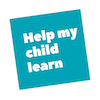What do You Test for a Learning Disability? #BigChecklist
You suspect learning problems.
Question: What do you test for a learning disability?
If you’re new to the world of learning differences, this might seem like a simple question. But there are many moving parts to learning, and your child’s challenges can have roots in developmental systems you’ve never thought about.
A checklist is a great first-level learning disability assessment tool. It can help educate you in the different parts of learning, in addition to screening your child.
If you’re just starting to wonder if your child might have learning disabilities, start with our shorter, 14-point checklist.
This particular checklist is broadly developed for children in grades 1-4, although it can inform parents of older (and sometimes a bit younger) children as well. Many of these symptoms flag stages of brain development that you’ll naturally see in younger children, or that every child demonstrates from time to time. We also include a collection of milestones.
Be smart in answering questions. If a checklist or test asks if your child “makes careless mistakes,” they aren’t talking about the type of careless mistakes that every child makes. They’re talking about a constant, obvious pattern of extremely careless mistakes.
Going forward, some parents suggest that it’s a good idea to mentally add the phrase “at a clinical level” to the end of each sentence when you fill out these type of checklists and tests. (And tell this to your child’s teacher as well!)
While information in this checklist is from many different reputable sources, please make sure that you consult qualified professionals who can diagnose learning disability and learning issues.
A First Learning Disability Checklist
Many learning disability checklists require that you select the area of weakness first. It can be complex for professionals to separate areas of weakness, so it’s even harder for parents untrained in LDs to do so. This broad checklist was distilled from many others, and is simply meant to give parents an answer to the question: “What do you test for a learning disability?” (and where do I go?)
Many children’s brains, and even skills, grow in an uneven fashion. By taking this test, you’re trying to discover what is difficult for your child. Then you can figure out how to help. You can get your child tested, and get school support, so that your child can be supported in learning, both in school and at home.
Learning disability evaluations should do more than just give your child a diagnosis. They should also include suggestions for helping your child learn more effectively. For example, maybe you work with an occupational therapist or a reading specialist to help your child develop new skills.
If your answers indicate patterns of difficulty, you can look for a more specific checklist in our collection of LD checklists. You can then take the results, together with your observations about your child, to your school district, or a testing specialist.
Don’t forget to take a look at our information on Whole Child testing. It’s important to remember that lack of sleep, visual problems, or even diet can affect your child’s performance.
Symptoms Shared by Many LDs
Here are some of the first things that parents report noticing, often before their child is diagnosed
- Appears bright, articulate, and intelligent but cannot read, write, or spell at grade level
- Often labeled lazy, dumb, “not trying hard enough,” or careless
- Problems paying attention
- Information seems to go in one ear and out the other
- Difficult time following three-step directions
- Has a hard time planning and executing tasks.
- Problems dealing with transitions or new situations
- Trouble understanding words or concepts
- Inconsistent: knows one day and doesn’t remember on other days. Or learns but forgets five minutes later
- Even when your child tries hard, performance doesn’t reflect their effort
- Learns best through hands-on experience
- Takes longer to learn things
If these bullets make you think about your child, go ahead and take the rest of the checklist.
Motor Skills
- Seems inappropriately clumsy
- Poor hand-eye coordination
- Trouble with buttons, zippers, snaps, scissors, and learning to tie shoes
- Dislikes and avoids writing and drawing
- Cannot draw a figure or a house
- Difficulty coloring within the lines or drawing triangles or squares.
- Holds pencil in an unusual fashion
- Has a hard time picking up puzzle pieces, coins, or using tweezers
If your child tests positive for more than four of the motor skills problems, talk with your doctor about seeing an occupational therapist for an exam.
Language
- Trouble modulating voice (too loud or too soft)
- Trouble remembering names of people or objects
- Has difficulty staying on topic
- Inserts invented words in conversation
- Has difficulty summarizing what has just been said
- Uses vague language and has a limited vocabulary
- Speech is slow and halting, using lots of fillers (um, er)
- Poor grammar, or misuses significant number of words
- Mispronounces common words frequently
- Confuses similar words or speech sounds
- Often has slips of tongue (i.e., a rolling stone gathers no moths)
- Has trouble rhyming, cannot tell if two words rhyme
- Slowness in learning songs.
- Isn’t interested in books or stories
- Has trouble understanding directions and needs repetition
- Has trouble understanding simple word jokes
- Cannot easily identify theme or ideas in a story
- Cannot tell a simple story using full sentences by first grade.
If your child has trouble with more than five of the language problems, talk with your doctor about seeing a speech-language pathologist (SLP.)
Reading
- Avoids reading or melts down instead of reading
- Cannot remember the alphabet song
- Slow to recognize and name letters
- Confuses similar-looking letters and/or numbers
- Has problems associating letters and sounds
- Has a harder time reading short words (is, to, of) than long words (birthday, dinosaur)
- Reverses letter order in words (e.g. was and saw)
- Trouble recognizing phonemes: (e.g. first or middle sound in simple words like “bed”)
- Loses place while reading
- Reads very slowly
- Problems blending sounds
- Guesses instead of sounding words out, especially with short words
- Cannot recognize letter drawn on back (e.g. “X”)
- Has poor memory for story if self-reads, but a good memory if read to
- Trouble spelling, or cannot spell nonsense words
If your child has trouble with four or more of the reading problems, talk with your child’s teacher, and then consider writing a letter to the school to request testing for a specific learning disability or dyslexia.
Written Language
- Dislikes and avoids writing
- Unusual difficulty learning to write
- Trouble writing the same letter in the same way twice
- Frequently reverses numbers, letters, and symbols
- Writing is messy, with many mistakes and corrections
- Unusual difficulty in spelling
- Trouble copying accurately, from near point, far point, or both
- Uneven spacing between letters and words, cannot write on the line
- Trouble seeing problems and correcting work
- Trouble organizing thoughts into a paragraph
- Consistent trouble with capitalization, punctuation, and grammar.
- Strong verbal answers to problems, but written answers are just a few words
- Leaves words unfinished or omits them when writing sentences
- Complains of being tired when writing
If your child has more than four of the written language problems, talk with your your doctor about seeing an occupational therapist for an exam.
Math and Numbers
- Has trouble with simple counting of objects
- Dislikes board games, or games that require math skills
- Number sense (which is bigger, 2 or 6?)
- Problems memorizing multiplication and division
- Skip counting is difficult (e.g., 2, 4, 6)
- Cannot write numbers in columns to do math
- No internal idea of time
- Cannot do mental math (addition or subtraction)
- Avoids games that require strategy
- Can read words, but has difficulty reading numbers or remembering a sequence of numbers
- Trouble understanding sequences (first we do this, then that)
- Difficulty verbally describing math processes
- Difficulty remembering telephone numbers.
If your child has problems with more than four of the math and numbers issues, you might want to consider dyslexia or dyscalculia testing.
Brain-Body
- Overly energetic and physically active: jumping, spinning, running all the time.
- Cannot sit still
- Extremely low energy and sedentary
- Impulsive behavior
- Short attention span: highly distractible
- Problems performing coordinated actions: cutting with knife, buttoning, handwriting
- Low muscle tone, floppy muscles: hard not to slump
- No dominant hand established by age 5, frequently switches hands for activities
- Problems with self-regulation: too active, overly emotional
- Trouble distinguishing left from right
- Sensitive to noises, crowds, lights, clothing
- Extreme dislike for normal behavior: bathing, brushing teeth, cutting nails, getting dressed
- Very picky eater
- Cannot draw a figure with six body parts by first grade
- Poor balance. Cannot stand on one foot
- Consistently covers one eye
- Problems with eye contact
If your child displays more than five of the brain-body problems you should talk with your doctor about seeing an occupational therapist for an exam. You can also use these concerns as the basis to request an OT exam as part of a free school evaluation for LD.
Executive Function
- Struggles with setting goals, making decisions, or identifying where to start.
- Trouble following multi-step directions
- Trouble estimating how much time a project will take
- Struggles with shifting between information that is literal versus figurative (e.g. paper versus online)
- Trouble organizing items, and ideas on paper
- Loses and forgets materials
- Leaves work at school
- Loses track of due dates
- Gets stuck on parts of tasks and can’t move forward
Experts caution that using checklists to measure executive function may overestimate a child’s problem. However, if you checked more than six of the executive function problems, you can request testing that includes parent and teacher input, like the Behavior Rating Index of Executive Function (BRIEF). Here’s more information on school assessment for executive function problems.
Memory Problems
- Omits words when writing sentences
- Misses steps in multistep problems
- Has problems with holding information in the brain, for example: can’t do mental math
- Follows only the first or last instruction
- Difficulty with reading comprehension
- Inconsistent performance
- Mistakes copying from the board
- Forgets what to say if called upon
- Has problems taking notes and listening at the same time
- Difficult to integrate new knowledge with older knowledge
- Seems unfocused, distracted, or lazy
Memory problems usually refer to working memory. There are several different types of working memory, and memory is distributed throughout the brain. If you answer more than four questions with a yes in these two subsections, you can ask your doctor or school to test for memory problems as part of LD testing.
Processing Speed
- Requires more time to gather thoughts together before responding to question.
- Takes longer to complete work or almost any activity
- Loses track or gets stuck when trying to find the correct words or answers, especially when having to go back through text.
- Trouble doing two things at once: e.g. reading/listening and taking notes
- Trouble with multi-step directions
- Can’t make quick decisions
- Can’t keep up with fast talk in conversations.
- Often confused with lack of effort
Processing speed challenges are found in many of the learning disabilities. Many bright people have slow processing; they don’t reflect on intelligence. However, they do impair a child’s ability to be effective at school.
If you answer more than four questions with a yes in the processing speed problems, you can ask your doctor or school to test for processing speed as part of LD testing.
The question of what do you test for a learning disability is too often left up to teachers and professionals who have very little knowledge of your child or experience watching their abilities. Parental input is needed, however, and the more you educate yourself, the more power your input can have.
If you download this checklist and bring it to the doctor or school, it can help provide a basis for further testing.










Pingback:Using Learning Disability Quizzes and Checklists: Our Collection – Help My Child Learn
Pingback:These 14 Questions Tell You if You Should Investigate Learning Disabilities – Help My Child Learn
Pingback:Whole Child Diagnosing - Help My Child Learn
Pingback:Does My Child Have Learning Problems? Quick Screener for Learning Disabilities - Help My Child Learn
Pingback:Finding Sensory Friendly Clothing and Shoes for Boys - Help My Child Learn
Pingback:Weighted and Compression Clothing Can Calm Your Child - Help My Child Learn
Pingback:Creating and Using a Learning Profile for Your Child - Help My Child Learn
Pingback:Checking Your Child's Writing Readiness Skills - Help My Child Learn